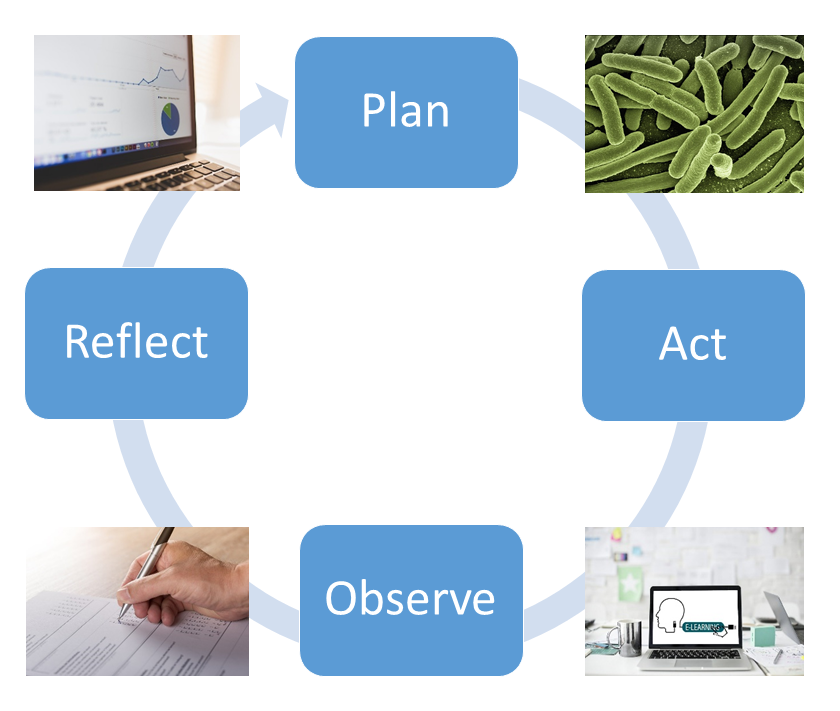7. Action research in action
Here is an example of the action research process in action:
In a hospital, the infection control nurses notice that infection rates are increasing in intensive care units. They decide to undertake a study to address the causes of infection and take steps to decrease the rates. They investigate which research type is the best fit for their study. Because improvement to their current system is likely to be a continuous process, as they learn and build on previous actions, they decide that an action research study would be the best fit.
Having chosen action research, they firstly "Plan" their approach. They notice that the primary reason of the increase in infection is the inexperience of newly appointed healthcare professionals. Therefore they create a education programme to educate new staff.
Now they "Act". They create an education programme for the new professionals and educate them for 1 hour a week. The programme looks at infection sources and how to eliminate them.
Having carried out the intervention they "Observe" its impact. They collect and analyse the infection rate data over the subsequent weeks, and also observe the behaviour of staff in the ICU in relation to infection and control procedures. They observe that infection rates start to drop slightly, but some aspects of infection control are still being missed.
Having collected their data, they "Reflect" on it. They notice that infection rates remain too high. They review their education programme, its duration and who it is aimed at. They plan changes to the education programme and begin a new action research cycle.
